#spanish neoclassical
Text

Gabriel Durán (Spanish, 1749-1806)
Giulio Romano, after (Italian, 1499-1546)
Justice, 1774
Real Academia de Bellas Artes de San Fernando
#Gabriel Durán#Giulio Romano#art#spanish art#italian art#latin#hispanic#spanish#classical art#neoclassical#european art#fine art#europe#european#fine arts#oil painting#europa#mediterranean#neoclassicism#justice#allegorical art#western civilization#spain#italy#1700s#1500s
217 notes
·
View notes
Text
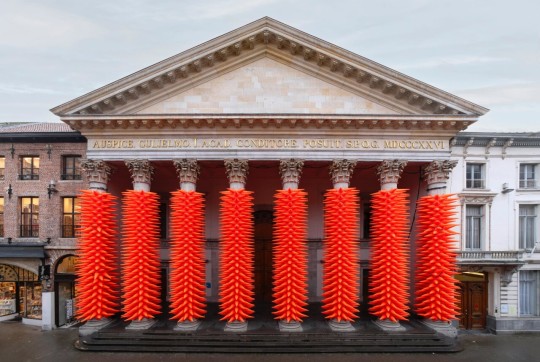
Traffic cones clad the neoclassical facade of Aula Academica at Ghent University - installation by the (Spanish) artist known as SpY
150 notes
·
View notes
Text
Ways English borrowed words from Latin
Latin has been influencing English since before English existed!
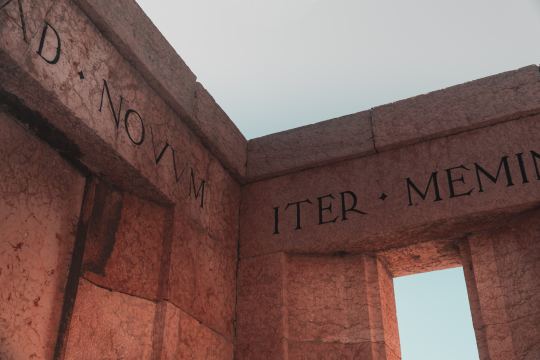
Here’s a non-exhaustive list of ways that English got vocabulary from Latin:
early Latin influence on the Germanic tribes: The Germanic tribes borrowed words from the Romans while still in continental Europe, before coming to England.
camp, wall, pit, street, mile, cheap, mint, wine, cheese, pillow, cup, linen, line, pepper, butter, onion, chalk, copper, dragon, peacock, pipe, bishop
Roman occupation of England: The Celts borrowed words from the Romans when the Romans invaded England, and the Anglo-Saxons later borrowed those Latin words from the Celts.
port, tower, -chester / -caster / -cester (place name suffix), mount
Christianization of the Anglo-Saxons: Roman missionaries to England converted the Anglo-Saxons to Christianity and brought Latin with them.
altar, angel, anthem, candle, disciple, litany, martyr, mass, noon, nun, offer, organ, palm, relic, rule, shrine, temple, tunic, cap, sock, purple, chest, mat, sack, school, master, fever, circle, talent
Norman Conquest: The Norman French invaded England in 1066 under William the Conqueror, making Norman French the language of the state. Many words were borrowed from French, which had evolved out of Latin.
noble, servant, messenger, feast, story, government, state, empire, royal, authority, tyrant, court, council, parliament, assembly, record, tax, subject, public, liberty, office, warden, peer, sir, madam, mistress, slave, religion, confession, prayer, lesson, novice, creator, saint, miracle, faith, temptation, charity, pity, obedience, justice, equity, judgment, plea, bill, panel, evidence, proof, sentence, award, fine, prison, punishment, plead, blame, arrest, judge, banish, property, arson, heir, defense, army, navy, peace, enemy, battle, combat, banner, havoc, fashion, robe, button, boots, luxury, blue, brown, jewel, crystal, taste, toast, cream, sugar, salad, lettuce, herb, mustard, cinnamon, nutmeg, roast, boil, stew, fry, curtain, couch, screen, lamp, blanket, dance, music, labor, fool, sculpture, beauty, color, image, tone, poet, romance, title, story, pen, chapter, medicine, pain, stomach, plague, poison
The Renaissance: The intense focus on writings from classical antiquity during the Renaissance led to the borrowing of numerous words directly from Latin.
atmosphere, disability, halo, agile, appropriate, expensive, external, habitual, impersonal, adapt, alienate, benefit, consolidate, disregard, erupt, exist, extinguish, harass, meditate
The Scientific Revolution: The need for new technical and scientific terms led to many neoclassical compounds formed from Classical Greek and Latin elements, or new uses of Latin prefixes.
automobile, transcontinental, transformer, prehistoric, preview, prequel, subtitle, deflate, component, data, experiment, formula, nucleus, ratio, structure
Not to mention most borrowings from other Romance languages, such as Spanish or Italian, which also evolved from Latin.
Further Reading: A history of the English language (Baugh & Cable)
154 notes
·
View notes
Text
People today: Ew Hetalia is so cringe who's out there making pretty personifications of countries
People through all of history: Hi my name is Marianne Rép'ublique Française France and I am inspired by the writings of Spanish philosopher Juan de Mariana (that's how I got my name) with loosely tied hair inspired by First Empire fashion and a lot of people tell me I look like the goddess Demeter (AN: if u don't know who she is get da hell out of here!). I'm not related to Mariamne the Hasmonean but I wish I was because she's a major fucking hottie. I'm an allegory of freedom but there's a bust of me in every prison. I have pale white skin. I'm also an allegory of the republic, and I first appeared as a design meant to replace the royal seal on official documents (I'm republican). I'm a neoclassical figure (in case you couldn't tell) and I wear mostly vaguely ancient clothing. I love ancient Greece and I buy all my clothes from there. For example today I was wearing a red phrygian cap symbolizing the emancipation of slaves since Antiquity and a loose off-the-shoulder chiton with a chemise underneath because I'm a sexy ancient Greek allegory but I have good Christian morals too. I was leading the people outside the Assemblée Nationale. It was snowing and raining so there was no sun king, which I was very happy about. A lot of royalists stared at me. I put up my middle finger at them.
#I used Marianne cause you know she's the one I know best for oui oui baguette reasons#@Americans because I know y'all: the word ''republican'' was not invented by one of your one and a half political parties#and is in fact in the dictionary with a number of definitions thanks for reading
41 notes
·
View notes
Text


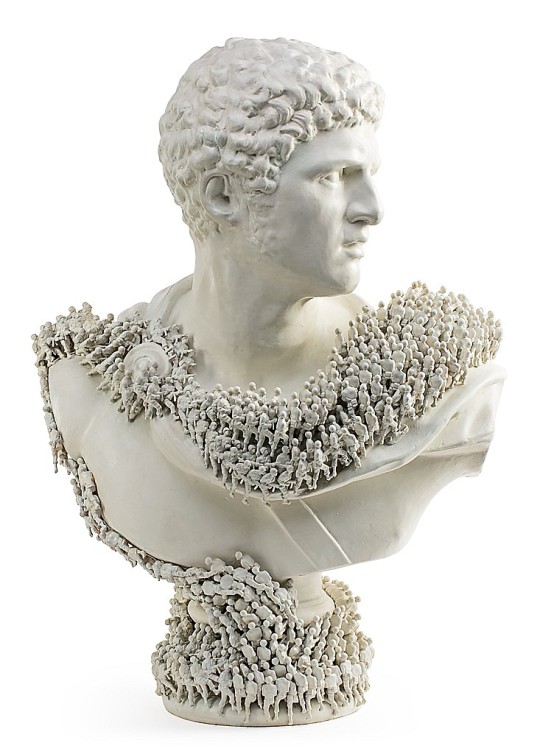
Works by Antoni Miralda, 1972-1973.
1st: Museu Es Baluard, Palma (Mallorca); 2nd and 3rd: Invaluable.
Antoni Miralda (born 1942 in Terrassa, Catalonia) was drafted in the Spanish army for the mandatory military service in his youth. During this time in the army, he lived a suffocating experience that has led him to reference violence and militarism in his work, often through the figure of toy soldiers. In these art pieces, Miralda reused replicas of famous classical and neoclassical sculptures and added an army of toy soldiers climbing it up, taking over.
I didn't find any explanation of what the artist intended with these works besides the biographical notes explained in the previous paragraph, so we are left with our own interpretations.
Personally, when I saw these works I was surprised. At first glance, I didn't realise that those tiny figures are soldiers: before zooming in, they looked like vermin. Some kind of bug or termites eating away the sculptures. Recently, I have found myself thinking about these sculptures again. It's like war is, quite literally, taking over them, eating these remains of artistic heritage and history. War and militaristic values eat up all traces of a cultural legacy to leave only ruins. We keep seeing everywhere, we saw at home during the Civil War (1936-39), we saw it with the USA army destroying and sacking museums and archaeological sites in Iraq, ISIS blowing up centuries of historical and artistic legacy, and again we see it now at an unprecedented scale in Israel's massacres of Palestinian life, art, history and all their cultural heritage places.
I don't know what the artist was expressing with these works, but sadly they immediately made so much sense to me, because we keep seeing it over and over.
How would you interpret them?
#antoni miralda#arts#escultura#art#contemporary art#1970s#sculpture#conceptual art#modern art#weird art#contemporary artist#artists
17 notes
·
View notes
Text
(Forgive me for the complete art history tangent I am about to go on…)
So I briefly mentioned this before but I wanna go more in depth with it after seeing the interiors you chose for the mood board; those examples? Aren’t actually Rococo, but instead qualify as Baroque. It’s easy to get the two mixed up -there are tons of shared qualities and a close history between the two styles and the line can get pretty blurred at times- but the reason I stress this as much as I do is because the core design philosophy of Rococo is completely contradictory to Nightmare’s whole vibe.
The entire idea behind Rococo was to, unlike Baroque, embrace a frivolous and jovial aesthetic that pulled away from the more serious and dramatic tones that its predecessor embodied. There was ample use of playful curves, asymmetrical designs and lighter colours with decorum inspired more by nature (garlands, flowers, seashells, etc). If not for the existence of cottage-core, Rococo would honestly fit Dream more than it would Nightmare.
Baroque on the other hand had a heavy focus on the provocative: bold colours, heavy contrast, dramatic lighting (chiaroscuro in painting was also developed in this period), heavily symmetrical and orderly layouts. Compared to Rococo, Baroque is considered to be more serious, somber and strict in its aesthetic. In a way, it was a near ceremonial display of divine power (which made it a popular style in churches).
It is also worth noting that Baroque originates from the term “barocco,” which has a handful of meanings, including bizzare, extravagant, elaborate and even barrueco (spanish) which roughly translates to ‘Irregular/ Imperfectly shaped Pearl’ (and considering Nightmare, I’d say that tracks nicely).
While Rococo was a more centralized movement in France that didn’t even last a full century (before The French Revolution and Neoclassism basically obliterated its popularity), Baroque originated in Renaissance Italy and was able to take a more stable hold throughout most of Europe (including Spain) and lasted about twice as long.
Here’s a link to an article that goes more in depth, but generally the main difference between the two periods are the moods each is trying to convey, which when the focus is emotion based deities, means everything: https://dengarden.com/interior-design/Rococo-vs-Baroque-in-Architecture-and-Design
(Thank you for coming to my TED Talk)
Hey! I always like an impromptu art history/architecture lesson!
Also it helps so much. I saw the initial difference and was like “No, baroque isn’t fancy enough” and then, in googling for normally colored examples, I found some rococo ones that were about what I pictured.

But yeah, baroque for sure! (this via ‘black and gold baroque interior’ search) That was a fascinating read, thank you!
Also fits with the exterior, which is...
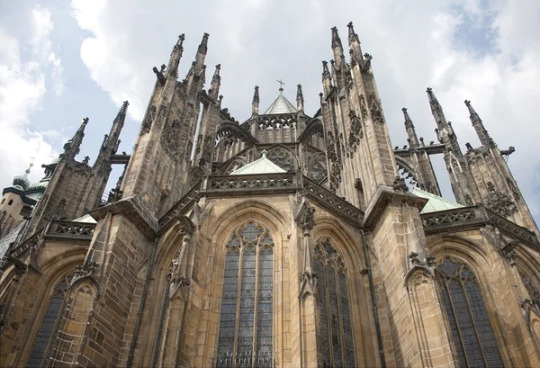
...Gothic, but fits with his dramatic, extravagant ass. (A baroque exterior isn’t quite dramatic enough, nor intimidating enough.)
27 notes
·
View notes
Text
Gaspar Melchor de Jovellanos (1744–1811). Spanish neoclassical statesman, author, philosopher was born at Gijón in Asturias, Spain. Selecting law as his profession, he studied at Oviedo, Ávila, and the University of Alcalá, before becoming a criminal judge at Seville in 1767.
🖼 Portrait of Gaspar Melchor de Jovellanos (1798). 🎨 Unknown author.

youtube
Asturias is situated in a mountainous setting with vast greenery and lush vegetation, making it part of Green Spain. The region has a maritime climate. It receives plenty of annual rainfall and little sunshine by Spanish standards and has very moderated seasons, most often averaging in the lower 20s celsius. Heatwaves are rare due to mountains blocking southerly winds. Winters are very mild for the latitude, especially near sea level. The most important cities are the communal capital, Oviedo, the seaport and largest city Gijón, and the industrial town of Avilés. Other municipalities in Asturias include Cangas de Onís, Cangas del Narcea, Gozón, Grado, Langreo, Llanera, Laviana, Lena, Llanes, Mieres, Siero, Valdés, Vegadeo and Villaviciosa. Asturias is also home of the Princess of Asturias Awards. (Wikipedia)
24 notes
·
View notes
Text
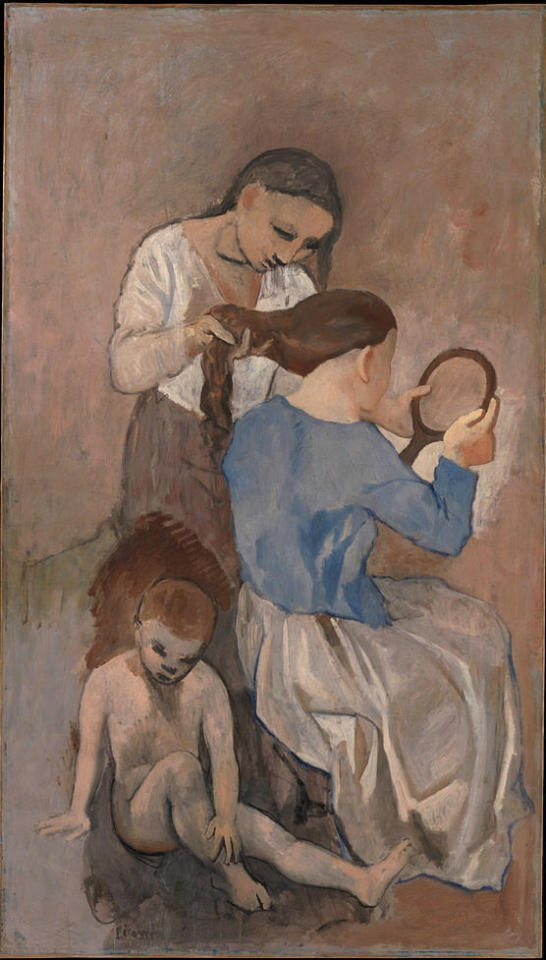
MWW Artwork of the Day (4/26/24)
Pablo Picasso (Spanish, 1881-1973)
La coiffure (1906)
Oil on canvas, 174.9 x 99.7 cm.
The Metropolitan Museum of Art, New York (Wolfe Fund)
Although today art historians associate a woman at her toilette with Edgar Degas's famous series of nude bathers, shown in Paris at the 1886 Impressionist exhibition and repeated in his oeuvre until about 1910, it is unlikely that Picasso could have seen many examples. Degas had drawn inspiration from the Neoclassical painter Jean-Auguste-Dominique Ingres, and that same source was used by Pierre Puvis de Chavannes and Auguste Renoir in their development of the theme at the end of the nineteenth century. In an odd twist, however, Picasso chose to suppress in this picture all the eroticism that normally attends the subject. Instead, he turns the picture into a contrapuntal variation on the Holy Family, with echoes of Leonardo's "Virgin and Saint Anne" at the Musée du Louvre.
2 notes
·
View notes
Text
Chapultepec Castle
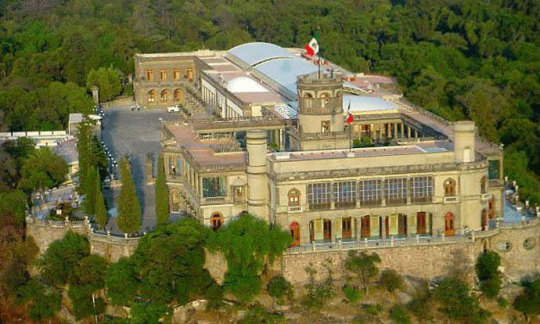
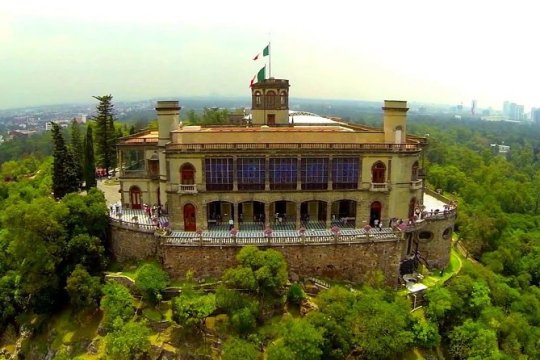




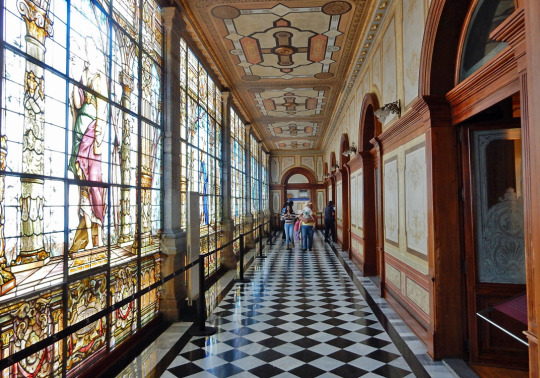


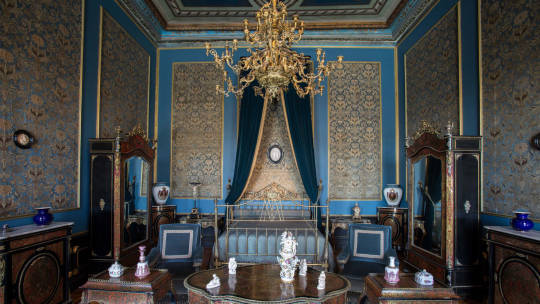




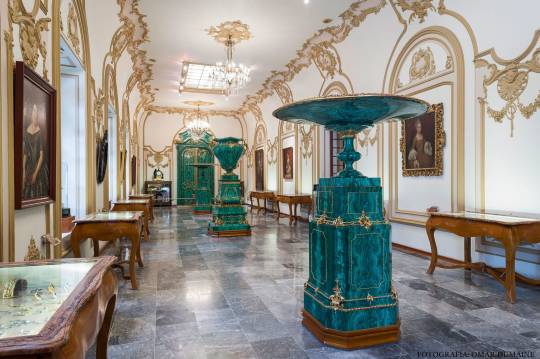


Chapultepec Castle is located in Mexico City, Mexico. The fortress was built in 1725 by Viceroy Bernardo de Gálvez to serve as the home for the Viceroy as the commander in chief of the Spanish colony, New Spain. After the Mexican War of Independence from 1810-1821, the structure was eventually used as a military academy in 1841. In 1847, it was the site of the Battle of Chapultepec during the Mexican-American war. In 1864 it was remodeled and additions were added. It became an official royal residence of Emperor Maximilian I, and his wife, Empress Carlota, who took residence during the Second Mexican Empire. It is the only castle in North America that served as a residence for royalty. Maximilian created the castle’s current floor plan and neoclassical style. In 1867, following the establishment of the Republic, Maximilian’s reign ended as President Benito Juárez regained power. Today, the castle houses the National Museum of History, the Hall of Viceroys with every viceroy who ruled Mexico from 1535-1821, impressive gardens, and marble terraces. The castle’s land has been inhabited since the days of the Aztec Empire. In the 15th century, the Aztecs built the aqueduct from Chapultepec to Tenochtitlan.
2 notes
·
View notes
Text
41 BUILD STYLES
Hey simmers, today I share with you my list of build styles I use. So most of these styles I have never built before. I put this list in a wheel spinner, you can copy and paste it in, then let the wheel spin and see what build style it lands on.
I usually search the build style on pinterest and then pick a design from there for my Sims 4 build. You can decide after the wheel has selected a style if it should be removed from the list or remain for a possible second build. Also you can save the wheel spin list in the top right corner of the website there is options then you do not have to keep putting the list in.
The List:
A-Frame
Antebellum
Art Deco
Asian
Barn dominium
Bungalow
Brutalist
Cabin
Cape Cod
Colonial
Contemporary
Cottage
Country
Craftsman
Dutch Colonial
Eastlake
Farmhouse
Federal Architecture
French Country
French Provincial
Georgian
Greek Revival
Gothic Revival
Italianate
Log Home
Mediterranean
Mid Century modern
Modern
Neoclassical Architecture
Pueblo
Prairie
Queen Anne
Ranch
Romanesque Revival
Rowhouse
Saltbox
Shingle
Spanish
Townhouse
Tudor
Victorian
I would love to see your builds!! Let me know and share me your socials so I can follow! My YouTube channel <3
Have a lovely day further!
#my sims#simblr#sims 4#the sims#the sims 4#sims 4 build#sims 4 build ideas#build ideas#build styles#sims 4 building tips
6 notes
·
View notes
Note
can i ask about the side wound!!! i was looking at francisco goya’s art yesterday and he and a lot of his baroque influences don’t include the side wound in their works depicting the crucifixion. do you know why this might be???
i just looked up goya’s crucifixion and wow that’s so sad. WHERE IS THE BLOOD? basically his interest isn’t actually depicting the suffering christ, he’s focused on displaying his mastery of anatomy through neoclassical ideals… he cares about making it look pretty and perfect and polished! not about devotion to the body of christ or the passion or the side wound. Boooooo 👎 + the baroque influences i can’t really speak to bc it’s really not my period i had like 1 lecture on spanish baroque 3 years ago i can’t remember anything 😭
3 notes
·
View notes
Text

Manuel Mariano Rodríguez (Spanish, c.1780-1855)
Galería Neoclásica, 1801
Real Academia de Bellas Artes de San Fernando
#Manuel Mariano Rodríguez#Rodriguez#spanish art#galeria neoclasica#neoclassical#neoclassicism#art#1800s#fine art#european art#classical art#europe#european#fine arts#oil painting#europa#classic art#artwork#painting#architecture#landscape architect#architettura#architectural art#landscape#vaulted ceiling
288 notes
·
View notes
Text


OTD in Music History: Important 20th Century Spanish composer and conductor Manuel de Falla (1876 - 1946) is born in Cadiz.
Widely hailed as one of the greatest Spanish composers in history, de Falla actually lived and studied in France for many years during his youth. Following the tremendous international success of his ballet "El sombrero de tres picos" ("The Three-Cornered Hat," 1917), however, he relocated to Granada, Spain -- where, in 1922, he organized an Andalusian folk music festival and composed a puppet opera entitled "El retablo de Maese Pedro" ("Master Peter's Puppet Show," 1923). Like his subsequent Harpsichord Concerto (1926), which also contains prominent echoes of Domenico Scarlatti (1685 - 1757), "El Retablo" is a neoclassical work which shows Falla much influenced by Igor Stravinsky (1882 - 1971). After 1926, however, he wrote very little, instead enjoying a quiet retirement in Spain before moving to Argentina in the wake of the Spanish Civil War.
de Falla's other important works include his ballet "El amor brujo" ("Love, the Magician") (1915), which contains the well-known "Ritual Fire Dance," and his tone poem "Noches en los jardines de España" ("Nights in the Gardens of Spain") (1916).
PICTURED: A c. 1930s real photo postcard, showing the elderly de Falla.
#classical music#composer#symphony#orchestra#music history#conductor#Manuel De Falla#De Falla#pianist#Piano#Nocturne#classical#classical composers#classical singer#classical composer
13 notes
·
View notes
Text
El Museo del Prado: A Legacy of 200 Years
El Museo del Prado, established in 1819 and posits itself as the main cultural center of Spain, serves as one of Europe’s premier art institutions. The beginnings of the formal museum were not found in the halls of the monarchy, but rather in the palaces of the nobility; instead of just a show of artworks, nobles took more of an art historical approach to their collections. However, it wasn’t until the reign of Joseph Bonaparte that plans for a national museum were fostered. Nonetheless, Ferdinand VII was the individual that allowed those plans to come to fruition, not necessarily as a way to promote civil rights, a legacy of the French Revolution, but instead as a way to cement a national heritage for his country, and also as a reminder of the extent of his power. The building that serves as the museum was designed by Juan de Villanueva in 1785, and was initially meant for an academy of natural history. Thus, despite the change in purpose, the building, and later, the Museum itself was meant as a place of learning and a nexus of Spanish scholasticism. Because of this, the Prado acts as a landmark of sorts, highlighting Spain’s desire to investigate deeper into the Spanish school, an example of Spanish national identity, a far cry from the outward approach to art two centuries earlier.
Since its inception, the Museo del Prado has existed as a synonym of Spanish art, due to its collection of the most Spanish artworks in Europe. However, most of its collection comes from the Habsburg and Bourbon houses, which not only consisted of Spanish art, but also those of Flemish, Italian, and French masters. Thus, the Prado’s collection is able to facilitate a conversation across temporalities, and quite possibly serves as one of the driving vehicles towards modernity. The Prado was created as one way to establish a national heritage of Spain, one that would feature its absolute monarch, Ferdinand VII. Additionally, art held a greater purpose than instruments of ornamentation, rather as a display of wealth and power for the royal family and their guests. The implementation of these great works into a public collection just serves as a reminder of the reach of Ferdinand’s absolute rule, while also fostering a more modern approach to public spaces, which gave more people access and knowledge about Spain’s role in the art realm. Even the building’s neoclassical style serves as a reference to the country's consumption of outside influences, but still suggests a identity that is all its own. Thus, by the time it adopted its current name, the Museo Nacional del Prado, Spain had just exiled its queen, Isabella II, serving as a reflection of Spanish sentiments, then and now. Fascinatingly, the museum was established in 1819, which was almost thirty years since the start of the French Revolution. The idea of a museum is a product of the Enlightenment, an antithesis to Ferdinand's total control over the state. However, through this museum Ferdinand’s power was placed on full display: the pride for his country, the artistry that it produced, and the community that it fostered grew in influence. By the start of the museum’s history, it contained 311 paintings and its catalogue was only published in Spanish; as time passed however, the collection grew, and the museum catalogue was no longer printed in Spanish, but also in French and Italian. The Prado’s influence is no longer restricted to just those of Spanish society, but spreads to a greater audience outside of the country who are then able to witness its influence.
The museum’s impact remained a constant throughout the nineteenth and beginnings of the twentieth century. However, that influence was tested with the start of the Spanish Civil War. The Civil War of Spain, which took place between 1936 to 1939, was a war of differing ideologies that were spreading through Europe, and could be considered a smaller scale of World War II, set to occur months after General Francisco Franco’s victory in Spain. The war was fought between the Soviet supported Republicans, who wanted a democratic republic, titled the Second Republic of Spain. Fighting against the Republicans were the Nationalists, comprised of mainly monarchists, who were supported by fascist Italy and Nazi Germany. By the end of the Spanish Civil War, however, the Republicans had lost control of the country, and Franco, the leader of the Nationalist faction, rose to power, establishing a military dictatorship until his death in 1975. During the fighting that broke out in all corners of the country, one of the main vulnerabilities of the Spanish was the art that they held, most of it centered in the Museo del Prado. This need to protect the cultural legacy of Spanish artists illustrates the cemented national heritage that Spain had formed over the past century through the Prado’s existence. Two of Spain’s great masterpieces, The 2nd and 3rd of May, 1808 by Francisco Goya, were transported on lorries to Valencia, then to Girona, even though they ultimately suffered damage from a train crash in the village of Biencarló. Damage aside, much of the Prado’s collection was protected by transporting these works to different parts of the country, especially to guard against the aerial bombings by Franco’s allies. Interestingly enough, both factions desired to protect the art of Spain, and months after fighting ceased, the artworks made their way back into the halls of the Prado in September 1939. Thus, for three years, the doors of the Prado were sealed, a fitting image for a country whose identity and fate was, at the time, uncertain.
The story of the Prado is a fascinating one, due to its distinct history as one of the only collections of Spanish art. Because of this, the Prado and the institution of the museum lends itself to be a protector of sorts. As seen with the Prado’s response to the Spanish Civil War, the main function of a museum is not to only showcase works, but to preserve them for generations to come. Masterpieces such as Las Meninas are more than just objects of ornamentation, and contain great deals of aesthetic and historical value. Additionally, these bodies of works that museums hold are a way to view past societies, as they change fluidly through time. The walls of a museum never stay stagnant, and very few pieces are constantly on display; hence, the public that it represents changes as well, with a few important exceptions. A museum reminds us of those exceptions, or the landmarks which can detail where we have been, and ultimately shape where we need to go. One important question to consider now is how the museum in general can be relevant to those marginalized in the field of art history? Is it necessary to justify its existence, and how can those excluded be involved now in this cultural discourse, despite their positionality in previous centuries? It is an ongoing process, one that will not be solved anytime soon, but with time, an answer may be revealed.
The Prado represents many things: a physical embodiment of the country’s cultural heritage, a space for artistic scholasticism, or even simply a must-see during one’s trip to Madrid. According to Michael Novacek, museums serve as a “tangible record of life on Earth.” Thus, the record that the Prado maintains is an invaluable source of information to Spain and a greater audience abroad. Not only is the museum a center for creative expression and intellectualism, but serves a deeper purpose: allowing its visitors to regain a familiarity of the human experience. By viewing the world through these masterpieces, it can allow some to challenge the notions of our own society, even with voices from the past. The Prado is only one example of a museum, but is part of a tradition that has been integral to Spain for the past 200 years. For future generations, let us hope for 200 more.
5 notes
·
View notes
Text



The entrance

a Giant Study hall
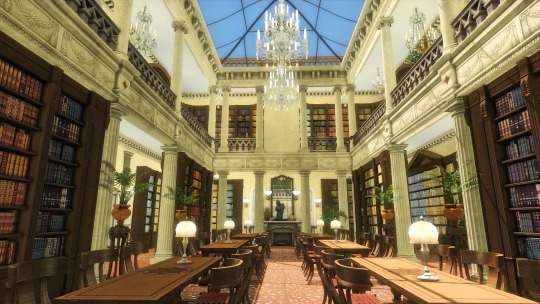

Computer room

Lounge ish place

a more private Study room
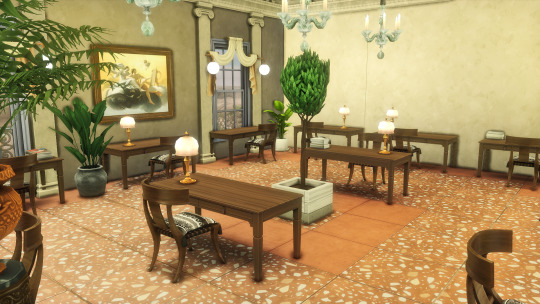
Art room
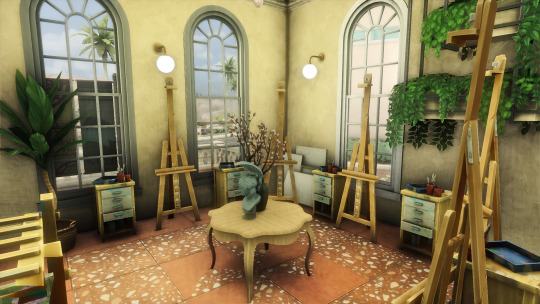
San Telmo Library
Inspired by Spanish baroque architecture, i had built a BASE GAME ONLY library in Oasis spring. although it looks too fancy for such a desolate location (i mean other than the 4 lots its literally entirely empty and void of any buildings, even fake ones) i still think it fits perfectly with the world
there is also a completely empty room for you to turn into whatever you want, maybe a kid's play area
it is in my gallery - HANKIT2004
cc info-
@felixandresims - EVERYTHING (other than the recent grove set)
@thejim07 - X , X , X , X , X , X , X , X , X , X , X , X , X , X , X , X , X , X , X , X , X , X , X , X , X , X , X , X , X (this took me ages lol)
@themarblemortal - Kerylos set , Family potraits
@harrie-cc - Livin rum , Orjanic , Kichen , Jardane , Brownstone , Brutalist
@pierisim - office mini kit , oak house
@the-regal-sim - historical living set
@strangestorytellersims - sectional library set , neoclassical parlour
@peacemaker-ic - elsie bedroom set , gwendeline sofa
@itskingfalcon - fuvwara set , railing set
#ts4 build#ts4#sims4#sims historical#the sims 4#sims 4 build#ts4 simblr#sims 4#felixandresims#sims#sims download
37 notes
·
View notes
Text

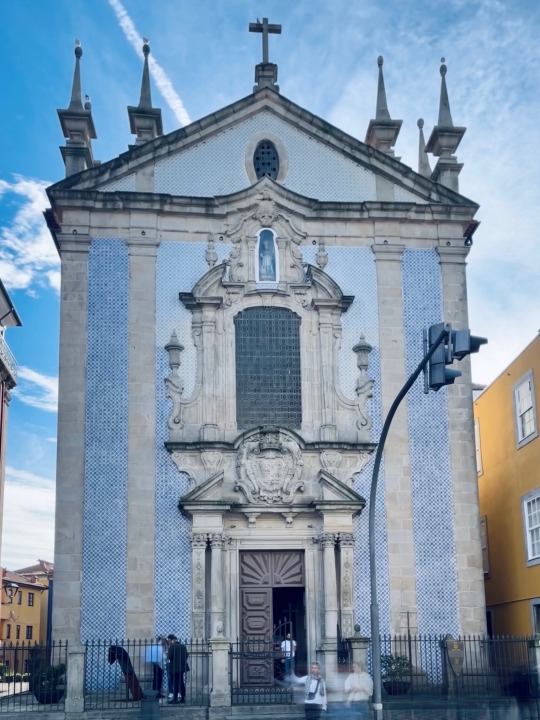
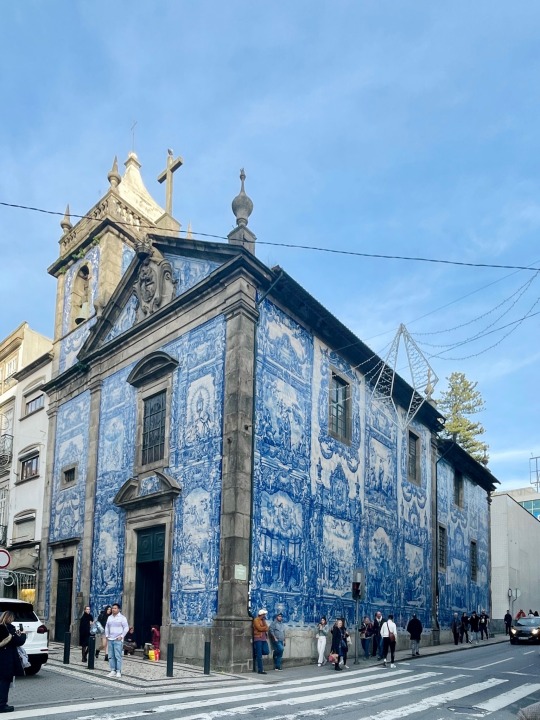

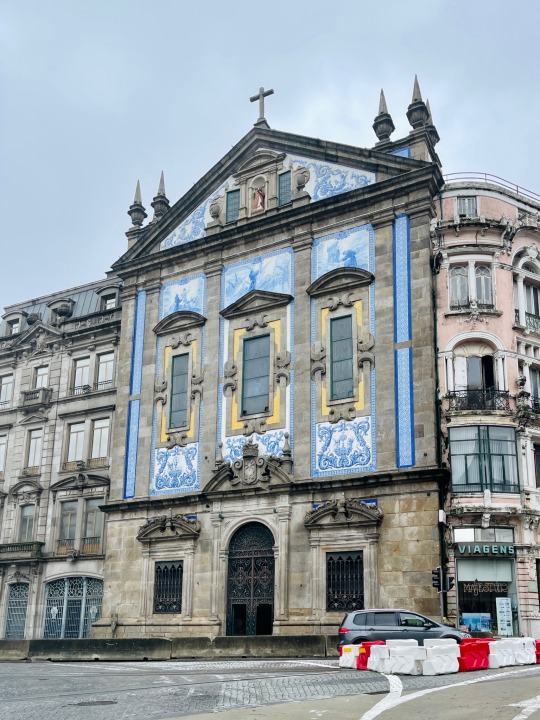
.
It’s Sunday so let’s share some beautiful Churches and their facade with azulejo tiles.
Azulejos have their origin in the Arabic word az-zillij meaning “polished stone.” King Manuel I introduced them into Portugal after a visit to Seville in 1503. The tin-glazed ceramics can be found in the interior and exterior of churches, palaces, ordinary houses and nowadays, restaurants bars and even railways or subways stations. Many azuléjos chronique major historical and cultural aspects of Spanish and Portuguese history.
1/ Igreja do Carmo (Carmo Chruch)… One of the oldest building in the historic part of Porto. It’s actually a combination of two buildings, one sating from the 1600s and the other from the 1700s. Originally it was builds for the Carmelite order of the Roman Catholic Church and was used as a convent.The exterior wall of the building is covered in tiles depicting the history of the Carmelite order
2/ Igreja Paroquial de Sao Nicolau (Parish Church of St Nicholas)… after a fire in 1758, the church was reconstructed in 1762 in a mixed Neoclassical and Baroque style. The facade was covered with tiles in 1861
3/ Capela Das Almas de Santa Caterina (Chapel of Souls)… The style of the church is basically neoclassical but the church is noted for its coverings of azulejo tiles. The 16,000 glowing blue and white tiles depicts scenes from the lives of Saint Catherine and Saint Francis of Assisi.
4/ Igreja de Santa Ildefonso (Church of Saint Ildefonso)… Constructed of granite, the shape of the church’s main body is that of a elongated octogone with decorative plater ceiling. Approximately 11,000 azulejo tiles cover the facade of the church which were created by artist Jorge Colaço and placed in novembre 1932. The tiles depict scenes from the life of Saint Illdefonso and figurative imagery from the Gospels.
5/ Igreja de Santo António dos Congregados (St Anthony’s Church of the Gatherers)… The church is dedicated to Saint Anthony of Padua. The building was constructed during the late part of the 17th century, The church replaced the original church a which stood on this land for several hundred years. The tiles work tells the story of St Anthony and the Asdsu;potion of the Blessed Virgin Mary.
9 notes
·
View notes